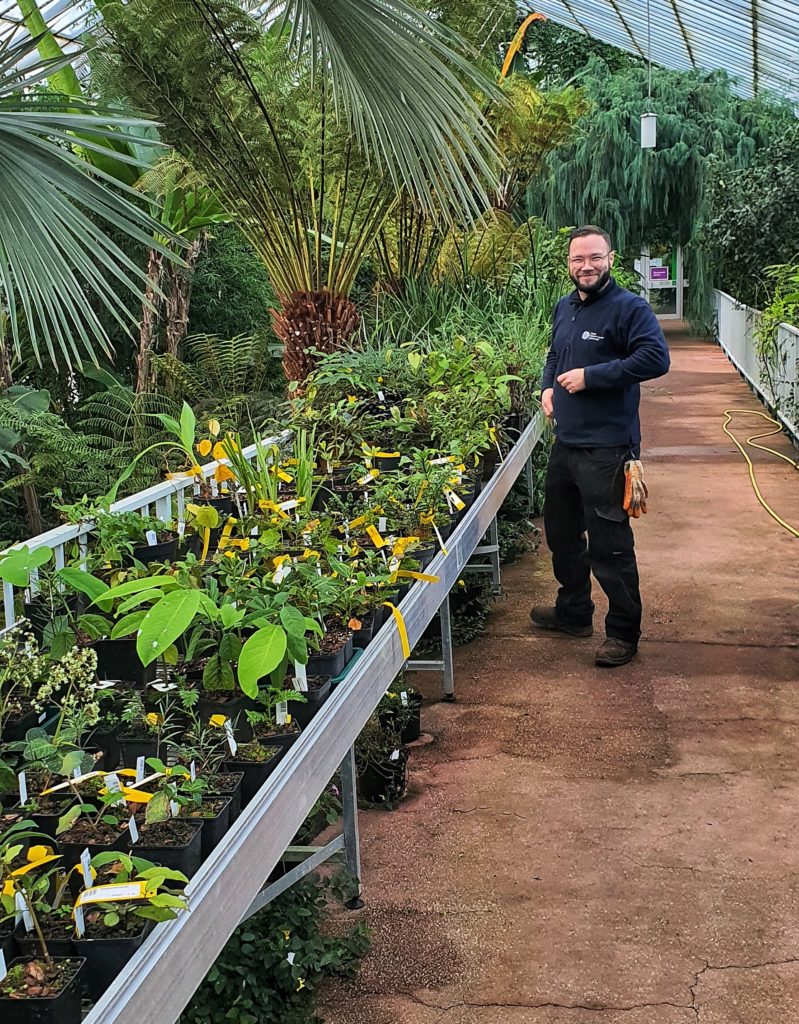
It all started with one houseplant. That one plant, a Crassula ovata (money plant), led me to having one of the healthiest obsessions human beings can possibly have; a love and passion for horticulture! My curiosity for the biodiversity of plants guided me to become a green-fingered enthusiast, and at one point, my collection grew to around 150 houseplants. That’s a lot of plants for one person when you really want to connect and understand each one on an individual level to maintain them properly and help them thrive.
Now, imagine 150 houseplants and multiply that figure by more than 250 times. It gives you an approximate idea of the 40,000 individual plants from all around the world that the Royal Botanic Garden Edinburgh holds in its Glasshouses; everything from a tiny slow-growing Lithops (living stone plant) to a fully-grown Trachycarpus princeps (stone gate palm).
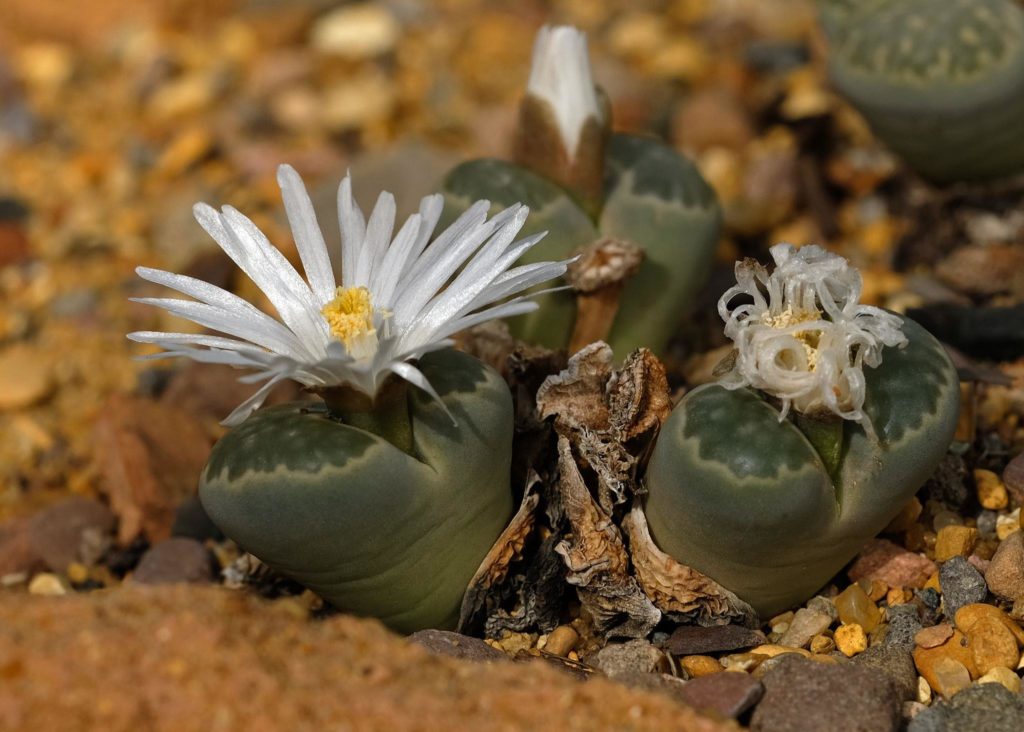
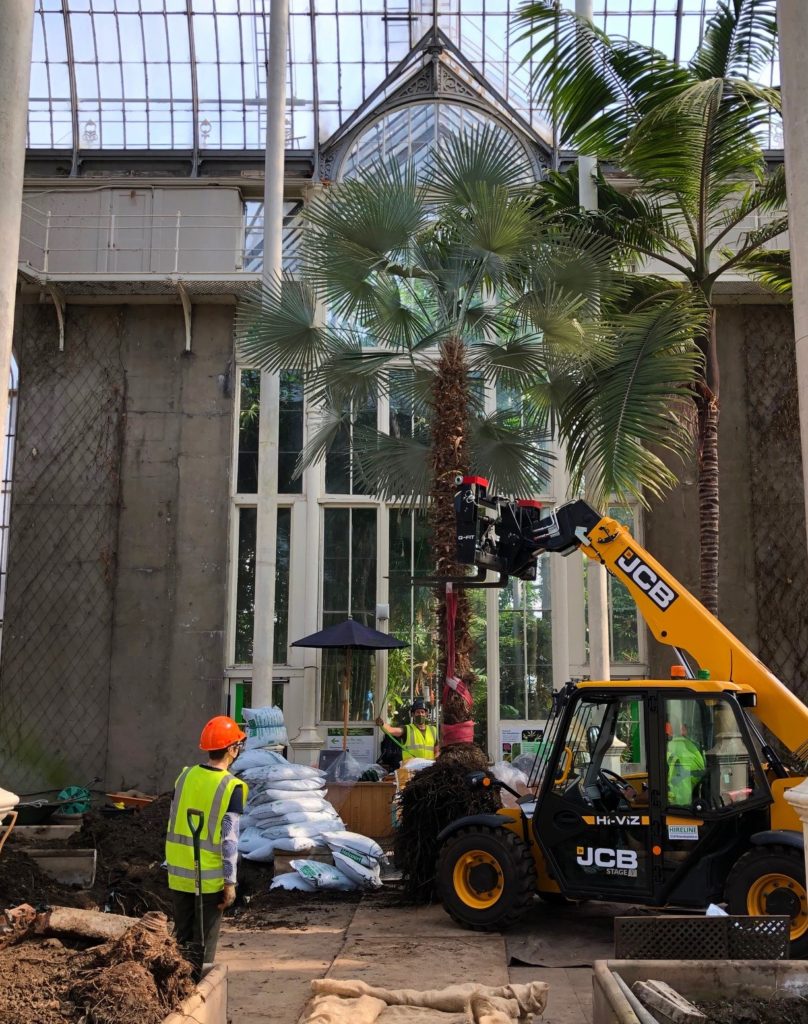
The ‘Decant’
Every single one of these plants is on the move during the evolution of the Biomes Project. We call these plant moves the ‘decant’ – a term that can be defined as ‘the rehousing of something while a home is being rebuilt or refurbished’.
Moving a potted plant from one glasshouse to another involves some careful thought and planning, but it is the lifting and potting of previously ground-dwelling plants that really presents a challenge. Watering is one example of a seemingly easy task that, if misjudged, can lead to a rapid decline of a potted plant.
Watering is an art and science in one
It all seems quite straightforward; just pour some water into your plant pot and job done, right? That is what I thought at the beginning of my journey, but it couldn’t be further from the truth.
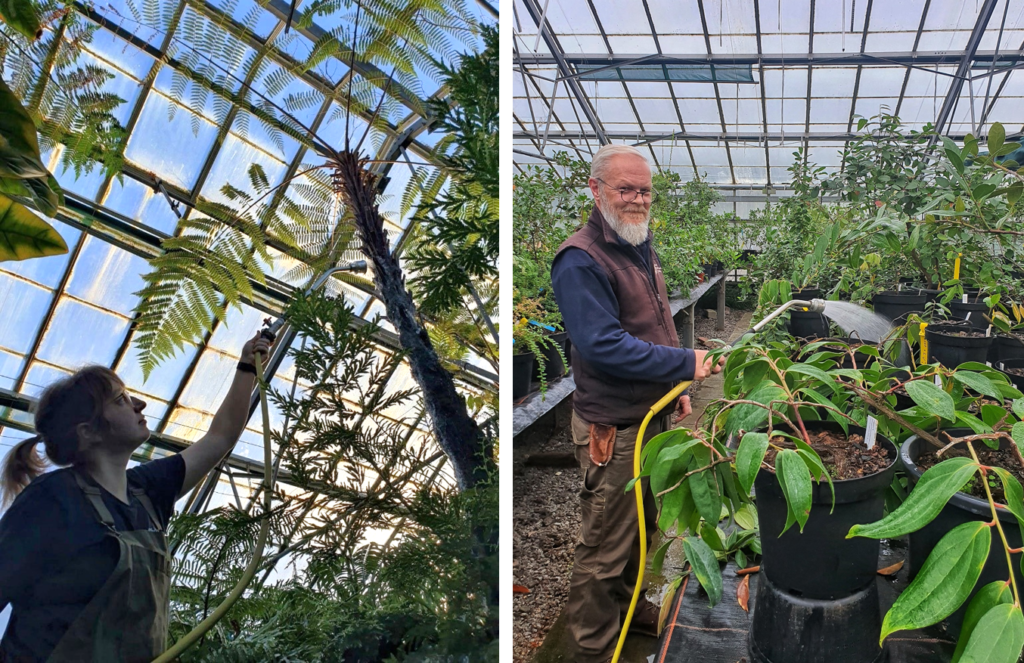
All plants that are potted, especially those that were previously growing in the ground, are in shock and stress. They have limited growing media space for healthy root growth and general establishment. With limits to root growth, they are never going to be able to sustain themselves in the same way as plants that are growing in the ground.
Additionally, potted plants are generally not growing in their natural environment. At RBGE, we try to recreate the ideal conditions but a plant’s natural environment is impossible to replicate 100%. This adds another layer of vulnerability to those plants already hindered by being contained in a pot.
Aspects like temperature, humidity, light levels, growing media used, and the type and origin of a plant are just a few examples of what you need to take into consideration while maintaining an indoor collection of potted plants from all around the world. Specialist expertise is required for each type of plant and there is less room for error when caring for plants in pots compared to plants that grow in the ground.
The main influence that affects the watering of a potted collection versus watering plants in the ground is the amount of growing media space available, and consequently the growing media’s water and nutrient storage capacity.
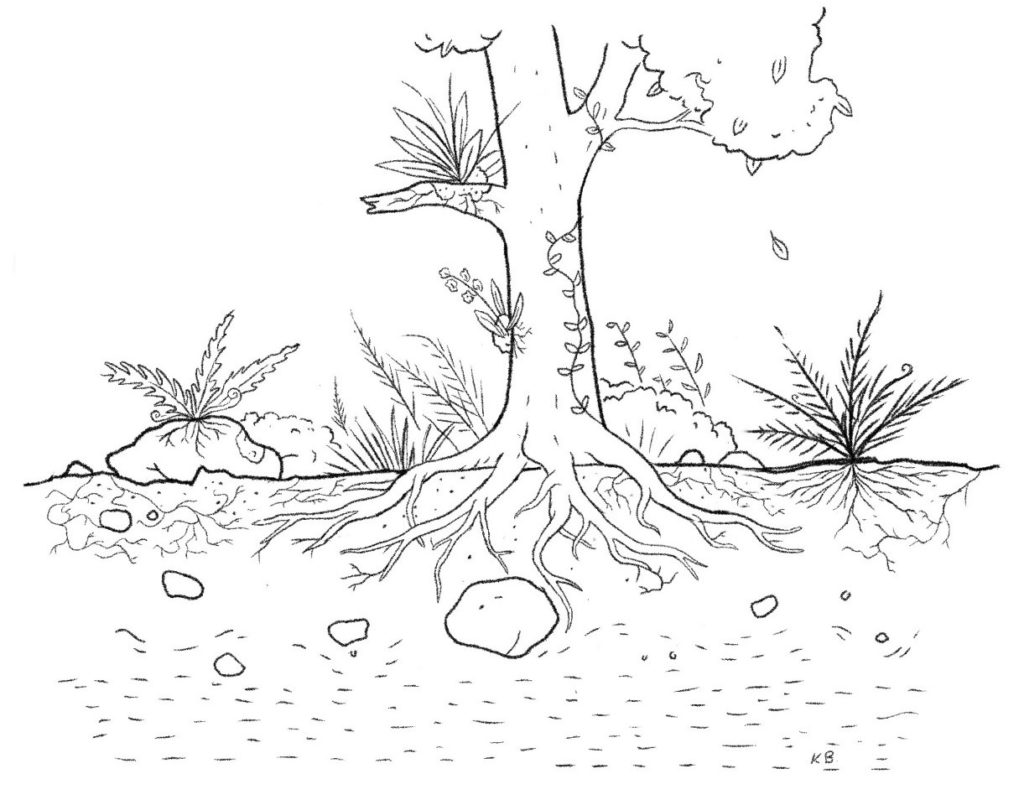
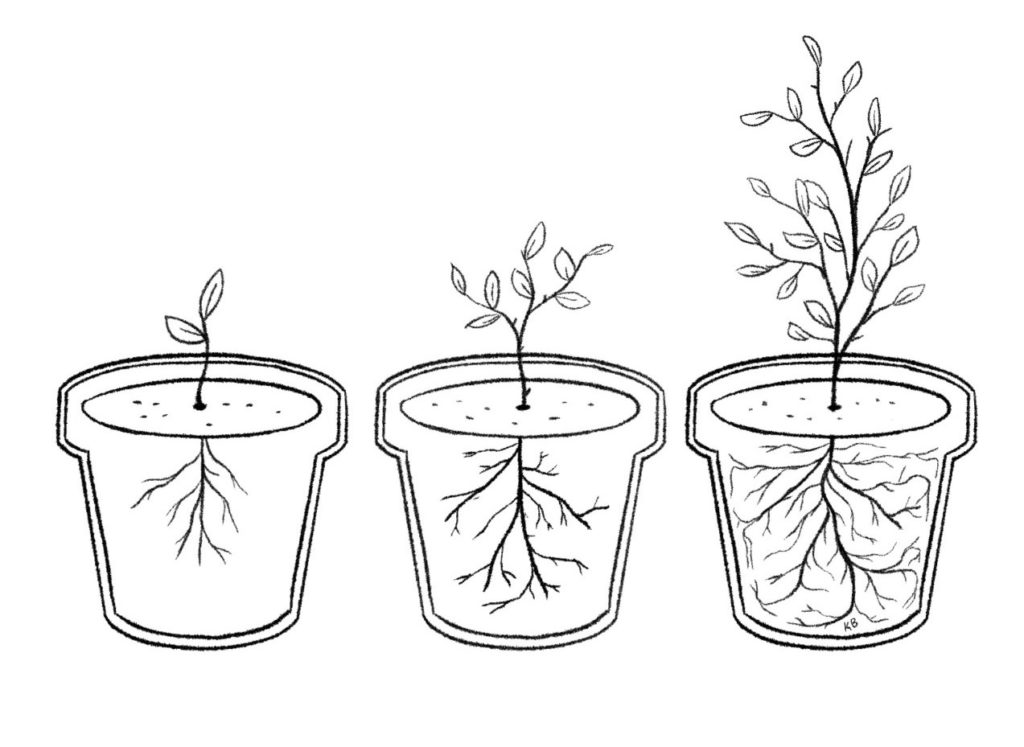
The roots of a plant in a pot have nowhere to go to look for water when it is in drought, and nowhere to escape when saturated. Plants in the ground are capable of taking in only the amount of water and nutrients that they need, and are much less likely to be overwatered. There is still a chance of suffering from drought, but the plants in the ground have a far greater opportunity to find water through a fully established root system, which itself reduces the chance of dehydration.
Maintenance of potted collections versus collections planted in beds
The table below shows some of the factors that contribute to the increased workload for potted collections.
| POTTED COLLECTION* | PLANTS IN BEDS** |
| More time required for watering. | Less time required for watering. |
| Higher chance of under- or overwatering which can lead to plants dying. | Smaller chance of under- or overwatering; more capacity of water reservoir in the soil. |
| Limited growing area for roots, which limits plant development and leads to pot-bound plants in need of regular repotting. | Plants can start growing towards their potential straight after planting, and require less maintenance when well established. |
| A more structured fertilizing regime is required, which takes more time. | A less complicated fertilizing regime that takes less time. |
| Depending on the plant group, watering often requires specialist knowledge, which is even more crucial with a mixed collection | More room for error or lack of knowledge while watering. |
| More space is required, which increases even more after plants are potted-up and grow bigger. | Ability to plant more plants next to each other, on each other (as is the case with epiphytes) and in layers. |
| More susceptible to pests and diseases, as plants are in shock while potted up and are never fully established. | When plants are well established, they are less susceptible to pests and diseases. |
| Growing media must be carefully selected for each group of plants or, in some cases, individual plants due to the stress of being in a pot. | Growing media selected is usually for a mix or group of plants and can be less bespoke. |
| Less mycorrhizal and microbial activity that is beneficial for plants. | More mycorrhizal and microbial activity that is beneficial for plants. |
Differences in general maintenance
Anybody who has a garden understands how much work it is to keep those plants maintained properly to achieve the desired vision. However, with plants growing in the ground there is more or less work to do depending on the season. It is not quite the same for potted plants growing indoors; these require regular attention all year around. No matter the time of the year, some watering is required even for the most drought-resistant species.
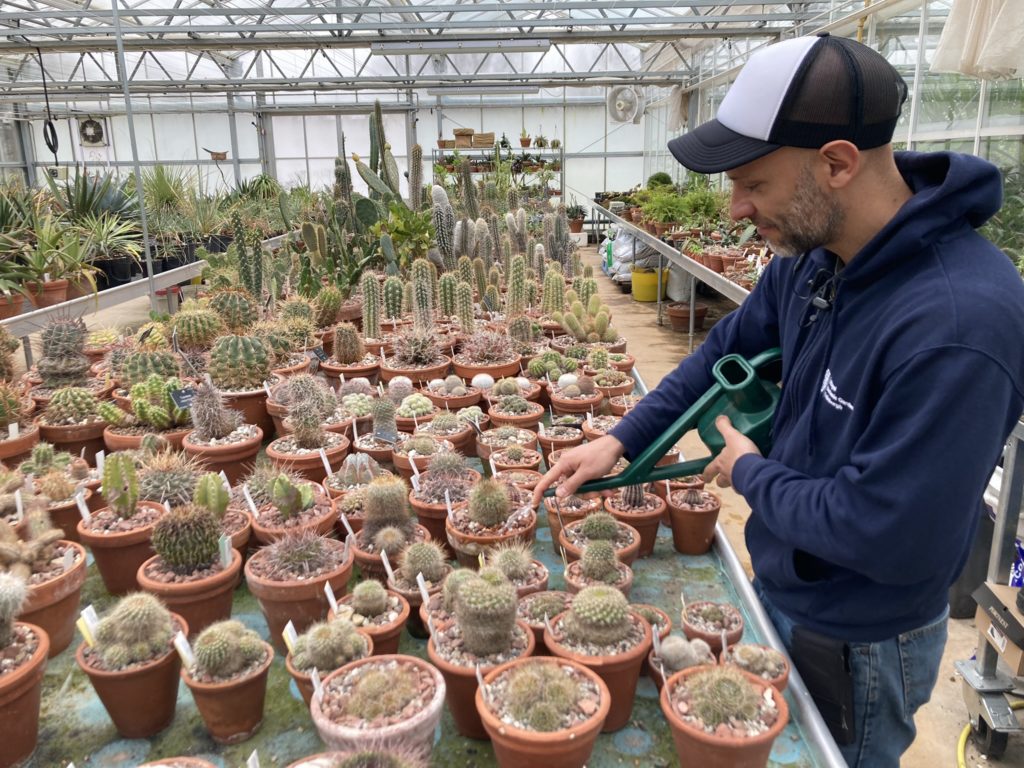
Another big factor that takes a lot of time and effort is the need for potting up of plants once, or even a few times, per year (depending on the plant). This is an important part of maintaining the collection. Plants that are not re-potted regularly can become either pot-bound, where the roots run out of space to grow and leave the plant in danger of malnutrition and drought, or stuck in a pot that no longer drains properly because the growing media has broken down and is saturated.
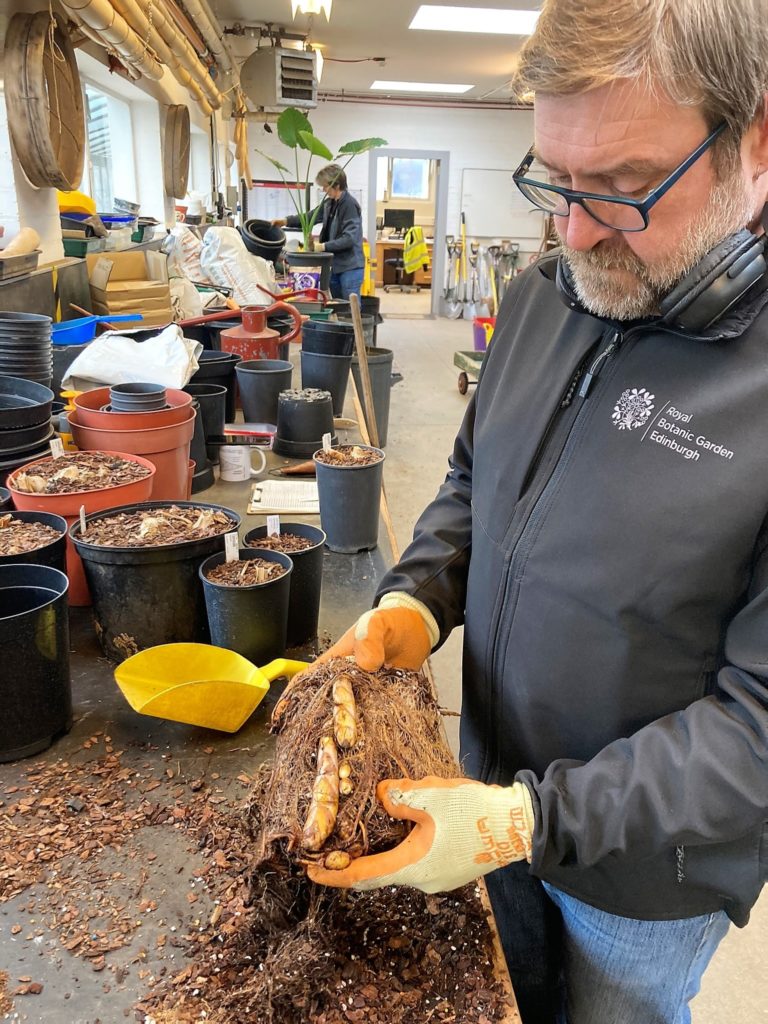
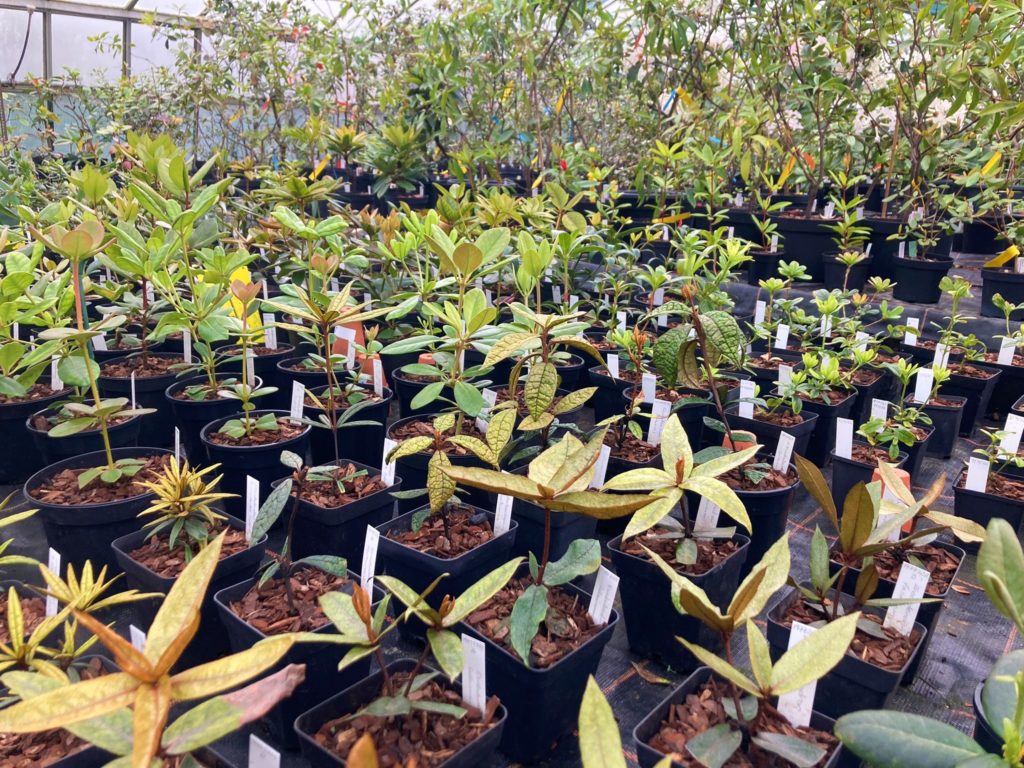
Additional challenges during the project
The complexity of the Edinburgh Biomes project brings with it many challenges, and one of them is a constant need for more growing space. Growing plants indoors requires plenty of room, especially when you consider the size of some of the plants we are moving.
The plants, and the pots we plant them into, are of a size not many will ever have the chance to experience. On top of that, the space inside the glasshouses is very limited. It is like painting the walls of your room while keeping all your furniture inside; you need to make space and then carefully move everything again before you can paint another part!
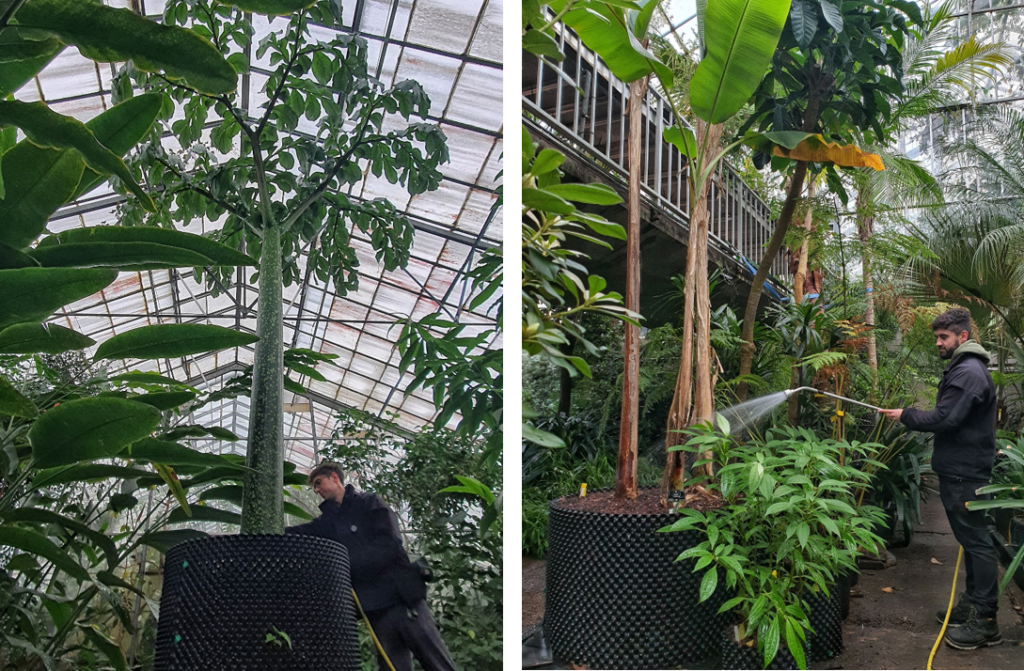
All of these factors together result in a need for a high degree of planning, organising, effort and diligence by all of the Horticulture team. It has been a privilege to be a part of this amazing project.
